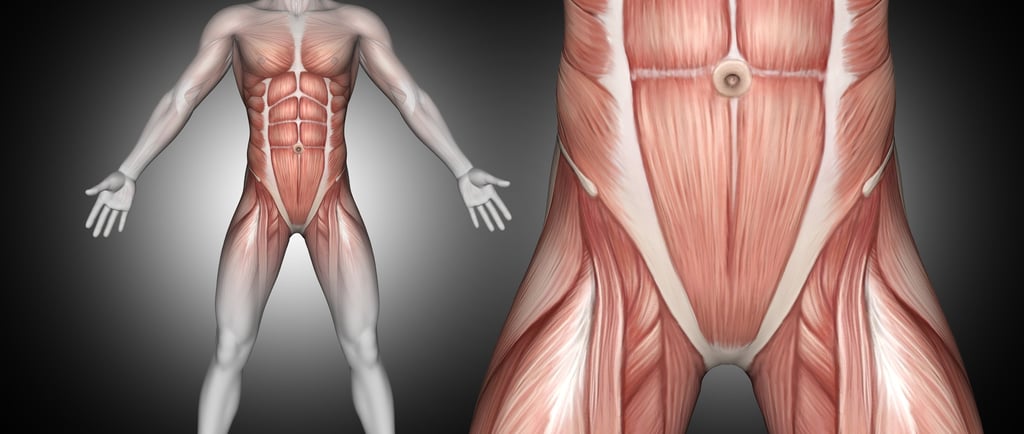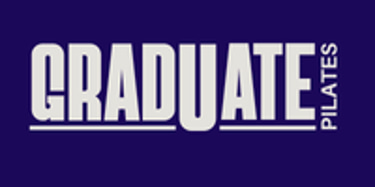What is the Pilates Powerhouse?
Learn the muscles included in the Pilates Powerhouse. Photo Credit: Freepik.com
PILATES FOR MUSCLE AND STRENGTH TRAININGPILATES FOUNDATIONS
Corie Kellman
7/16/20254 min read


Photo Credit: Freepik.com
What is the Pilates Powerhouse?
You've probably heard the term 'Pilates Powerhouse' thrown around in classes, but what does it really mean? In simple terms, the Powerhouse refers to the core muscles of your body that provide stability and strength. It consists mainly of the muscles in your abdomen, lower back, pelvis, and hips. When these muscles are strong and well-coordinated, they work together to improve your overall body control, posture, and balance.
The Muscles that Make Up the Powerhouse
To get a better idea of what the Pilates Powerhouse encompasses, let's break it down into its primary components:
Transverse Abdominis (TA) The TA acts as support for the spine. It also holds organs in place, and helps with cavity pressure to assist with coughing, pooping and natural child birth.
Rectus Abdominis The rectus abdominis, which is commonly known as the "six-pack" muscle, is responsible for flexing the spine.
Internal and External Obliques The obliques help with rotation and lateral flexion of the spine. During rotation the internal and external obliques contract in opposition of each other—for example, when rotating to the right, the left external oblique contracts and the right internal oblique contracts.
The Erector Spinae The erector spinae muscles provide support and aid in spinal extension. The erector spinae is divided into three main groups: the iliocostalis, longissimus, and spinalis.The iliocostalis muscles are the outermost muscles of the erector spinae group and help with lateral flexion, or bending sideways. The longissimus muscles are located more centrally along the spine and assist with extension, or bending backward. The spinalis muscles are the innermost muscles that run closest to the spine and primarily aid in stabilizing the vertebrae during movement.
Multifidus The multifidus stabilizes the lower back and works with core muscles to extend, rotate and laterally flex the spine.
Quadratus Lumborum The QL helps with lateral flexion (side bending) of the spine and stabilizing the lumbar area. It also plays a role in breathing and pelvic tilting.
Diaphragm The diaphragm’s primary function is to facilitate breathing by contracting and relaxing. When you inhale, the diaphragm contracts and moves downward, creating a vacuum that draws air into the lungs. As you exhale, the diaphragm relaxes and moves back up, pushing air out of the lungs.
Pelvic Floor The pelvic floor muscles are a group of muscles that form a sling or hammock at the base of the pelvis. They support the pelvic organs, including the bladder, uterus, and rectum, and help control bowel and bladder function.
Gluteus Maximus The gluteus maximus is the largest muscle in the body and is the primary muscle use to extend the hip. It also assists in stability while standing and helps to externally rotate and adduct at the hip.
Gluteus Medius The glute med is the main muscle in hip adduction. The front of the glute med also helps with flexion and internal rotation at the hip. The back of the glute med assists with abduction, extension, and external rotation at the hip. It helps with pelvic stability as well.
Quadratus Femoris The quadratus femoris is a glute muscle that helps externally rotate and adduct at the hip.
Inferior Gemellus The inferior gemellus is a deep glute muscle that aides in external rotation and abduction at the hip. It also helps stabilize.
Superior Gemellus The superior gemellus is a deep glute muscle that aides ini external rotation and extension at the hip.
Piriformis The piriformis is a glute muscle that helps with external rotation at the hip when it is extended and abduction of the hip when it is flexed. It also plays a small role in tilting the pelvis in both direction.
Adductor Magnus The adductor magnus is an inner thigh muscle that assists in adducting and internally rotating the thigh at the hip. It also stabilizes the pelvis.
Obturator Internus The obturator internus helps externally rotate and abduct at the hip. It is also a stabilizing muscle.
Iliopsoas The iliopsoas helps stabilize the hip and lower back. It is a hip flexor muscle comprised of the iliacus, psoas major and psoas minor. It assists in flexion and external rotation at the hip.
Pectineus The pectineus helps stabilize the pelvis, and flex, external rotate and adduct the thigh at the hip.
Tensor Fascia Latae The TFL helps stabilize and bend the knee. It also helps with lateral rotation of the leg, and abduction and internal rotation of the hip.
Rectus Femoris The rectus femoris helps with hip flexion and knee extension.
Adductor Longus The adductor longus helps adduct the thigh from the hip. It also helps with external rotation and flexion and stabilization of the pelvis.
Adductor Magnus The adductor longus helps internally rotate the thigh from the hip. It also helps with flexion, adduction, and extension at the hip and helps stabilize the pelvis.
Adductor Brevis The adductor brevis helps with hip adduction and flexion. It can also help internally or externally rotate the thigh.
Why Strengthening the Powerhouse Matters
Strengthening the Pilates Powerhouse offers a multitude of benefits that can enhance your overall fitness and daily life. A strong core can improve your athletic performance by providing better balance and control during exercises. It’s also key in preventing injuries; a stable core acts as a protective layer for your spine and joints. Additionally, a strong Powerhouse can enhance posture, making you stand taller and more confidently. Your core muscles are also critical to critical human bodily functions like coughing, sneezing, peeing, pooping, giving natural child birth, etc, not to mention nearly all daily functional movements.
Pilates exercises particularly focus on engaging the Powerhouse, encouraging you to connect with these muscles in a mindful manner. Whether it is creating the movement or acting as a stabilizer, the Powerhouse is considered in every Pilates exercise making the method a good choice for an individual looking to strengthen their core.
CONTACT US
© GRADUATE PILATES, LLC. 2025.
All rights reserved.
